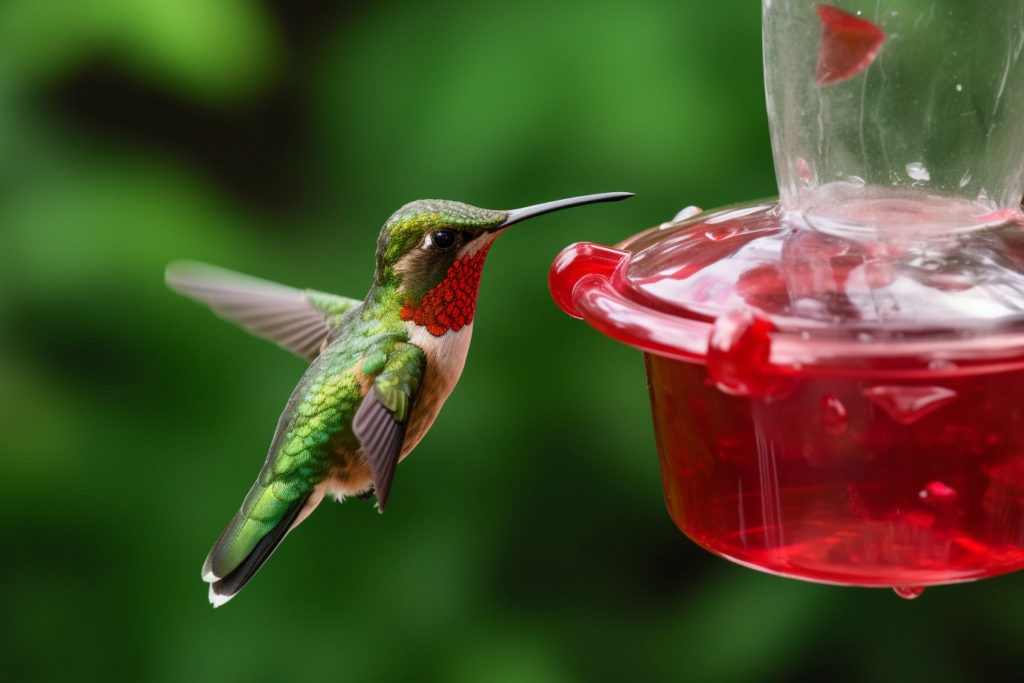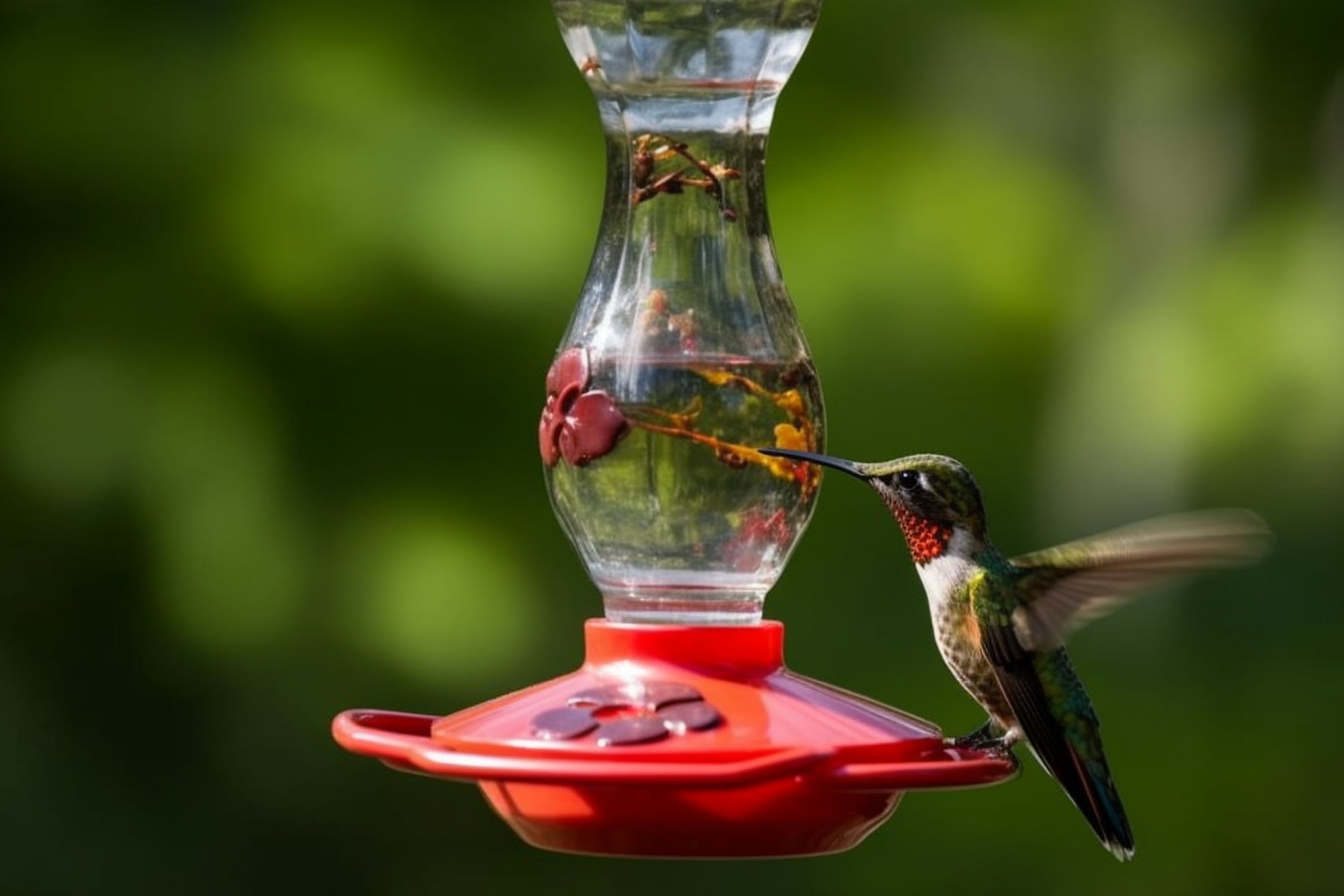If you’re wondering how often to change your hummingbird feeder in hot weather, the answer is more frequently than in cooler temperatures. In hot weather, it’s recommended to change the nectar in your hummingbird feeder every two to three days. This is because the heat can cause the nectar to spoil quickly, posing a risk to the health of hummingbirds.
In this post, we’ll discuss the importance of changing your hummingbird feeder frequently in hot weather and provide tips on how to maintain a healthy and safe environment for your feathered visitors.
- Why It's Important to Change Hummingbird Feeder in Hot Weather
- Maintaining a Fresh Hummingbird Feeder in Hot Weather
- Signs Your Hummingbird Feeder Needs Changing
- Conclusion
- FAQs – How Often to Change Hummingbird Feeder in Hot Weather
- Q: How often should I change the nectar in my hummingbird feeder during hot weather?
- Q: Why is it important to change the hummingbird feeder more frequently in hot weather?
- Q: What are the signs that my hummingbird feeder needs changing?
- Q: How can I maintain a fresh hummingbird feeder in hot weather?
- Q: What kind of nectar should I use in my hummingbird feeder during hot weather?
- Q: How should I store extra hummingbird nectar?
- Q: How can I keep my hummingbird feeder cool during hot weather?
- Q: Can I use red dye in my hummingbird feeder nectar?
- Q: How do I clean my hummingbird feeder during hot weather?
- Q: How can I prevent ants and bees from being attracted to my hummingbird feeder?
Related post to read: Best Hummingbird Feeders Compared.

Why It’s Important to Change Hummingbird Feeder in Hot Weather
- Nectar spoilage: The primary reason to change your hummingbird feeder more frequently in hot weather is the risk of nectar spoilage. As temperatures rise, the sugar in the nectar can ferment and produce harmful bacteria, which can be dangerous for hummingbirds to consume.
- Mould growth: In addition to spoilage, hot weather can also accelerate mould growth in your hummingbird feeder. Mould can cause respiratory issues in hummingbirds and should be avoided at all costs.
- Attracting unwanted insects: Spoiled nectar and mould can also attract unwanted insects, such as ants and bees, to your hummingbird feeder. These insects can not only deter hummingbirds from using the feeder but can also spread disease.
Maintaining a Fresh Hummingbird Feeder in Hot Weather
- Regularly clean the feeder: One of the most important steps in maintaining a fresh hummingbird feeder in hot weather is to clean it regularly. In hot weather, it’s recommended to clean the feeder every time you change the nectar. Use warm, soapy water to wash all components and rinse thoroughly.
- Use the right nectar: When refilling your hummingbird feeder in hot weather, it’s essential to use the right nectar. Avoid using red dye, as it can be harmful to hummingbirds. Instead, opt for a simple homemade solution of four parts water to one part white granulated sugar. Boil the water, dissolve the sugar, and allow the mixture to cool before filling your feeder.
- Store extra nectar properly: If you make extra nectar to have on hand, be sure to store it properly. Keep the nectar in a clean, airtight container in the refrigerator. This will help to preserve its freshness and prevent spoilage.
- Keep the feeder shaded: If possible, position your hummingbird feeder in a shaded area to help keep the nectar cool. Direct sunlight can cause the nectar to heat up and spoil more quickly, so providing some shade can help to extend the life of the nectar.
- Monitor the feeder: Regularly check your hummingbird feeder for signs of spoilage, mould growth, or insect infestations. If you notice any issues, address them immediately to maintain a safe and healthy environment for your hummingbird visitors.
Signs Your Hummingbird Feeder Needs Changing
- Cloudy or discoloured nectar: If you notice that the nectar in your hummingbird feeder has become cloudy or discoloured, this is a sign that it needs to be changed. Spoiled nectar can have a murky appearance and may have an off-putting odour.
- Mould growth: Inspect your hummingbird feeder for any signs of mould growth, both on the feeder components and in the nectar. If you see mould, clean the feeder thoroughly and replace the nectar immediately.
- Insect infestations: If you notice ants, bees, or other insects frequently gathering around your hummingbird feeder, this could be a sign that the nectar needs changing. Insects can be attracted to spoiled nectar or mould, so if you see an increase in insect activity, it’s time to clean your feeder and replace the nectar.
- Decreased hummingbird activity: If you observe a sudden decline in the number of hummingbirds visiting your feeder, this could be an indication that the nectar is no longer fresh. Keep an eye on the feeder and change the nectar if you notice a drop in hummingbird activity.
- Fermented smell: If the nectar in your hummingbird feeder emits a fermented or sour smell, it’s time to change it. Spoiled nectar can have a strong odour that is off-putting to hummingbirds and can be harmful if consumed.
Conclusion
Knowing how often to change your hummingbird feeder in hot weather is crucial for maintaining a healthy environment for your feathered friends. By following the guidelines in this guide, you can ensure that your hummingbird feeder remains fresh and safe, even during the hottest summer days.
Remember, a well-maintained hummingbird feeder not only helps to protect these beautiful birds but also provides you with the joy and wonder of observing them up close. So, take the time to change your feeder regularly and enjoy the captivating world of hummingbirds right in your own backyard.
FAQs – How Often to Change Hummingbird Feeder in Hot Weather
Q: How often should I change the nectar in my hummingbird feeder during hot weather?
A: In hot weather, it’s recommended to change the nectar in your hummingbird feeder every two to three days to prevent spoilage and mould growth.
Q: Why is it important to change the hummingbird feeder more frequently in hot weather?
A: Changing the hummingbird feeder more frequently in hot weather helps prevent nectar spoilage, mould growth, and the attraction of unwanted insects, all of which can be harmful to hummingbirds.
Q: What are the signs that my hummingbird feeder needs changing?
A: Signs that your hummingbird feeder needs changing include cloudy or discoloured nectar, mould growth, insect infestations, decreased hummingbird activity, and a fermented smell from the nectar.
Q: How can I maintain a fresh hummingbird feeder in hot weather?
A: To maintain a fresh hummingbird feeder in hot weather, clean the feeder regularly, use the right nectar, store extra nectar properly, keep the feeder shaded, and monitor it for signs of spoilage or mould growth.
Q: What kind of nectar should I use in my hummingbird feeder during hot weather?
A: Use a homemade solution of four parts water to one part white granulated sugar, avoiding red dye. Boil the water, dissolve the sugar, and allow the mixture to cool before filling your feeder.
Q: How should I store extra hummingbird nectar?
A: Store extra hummingbird nectar in a clean, airtight container in the refrigerator to preserve its freshness and prevent spoilage.
Q: How can I keep my hummingbird feeder cool during hot weather?
A: Position your hummingbird feeder in a shaded area to help keep the nectar cool and extend its life, as direct sunlight can cause the nectar to heat up and spoil more quickly.
Q: Can I use red dye in my hummingbird feeder nectar?
A: It’s best to avoid using red dye in your hummingbird feeder nectar, as it can be harmful to hummingbirds. Stick to a simple homemade sugar solution instead.
Q: How do I clean my hummingbird feeder during hot weather?
A: Clean your hummingbird feeder by disassembling it and washing all components with warm, soapy water. Rinse thoroughly and reassemble the feeder before refilling it with fresh nectar.
Q: How can I prevent ants and bees from being attracted to my hummingbird feeder?
A: Keeping your hummingbird feeder clean and changing the nectar regularly can help prevent ants and bees from being attracted to it. Additionally, you can use ant moats or other barriers to deter insects from reaching the nectar.
References:
- About Hummingbird (Wikipedia).
